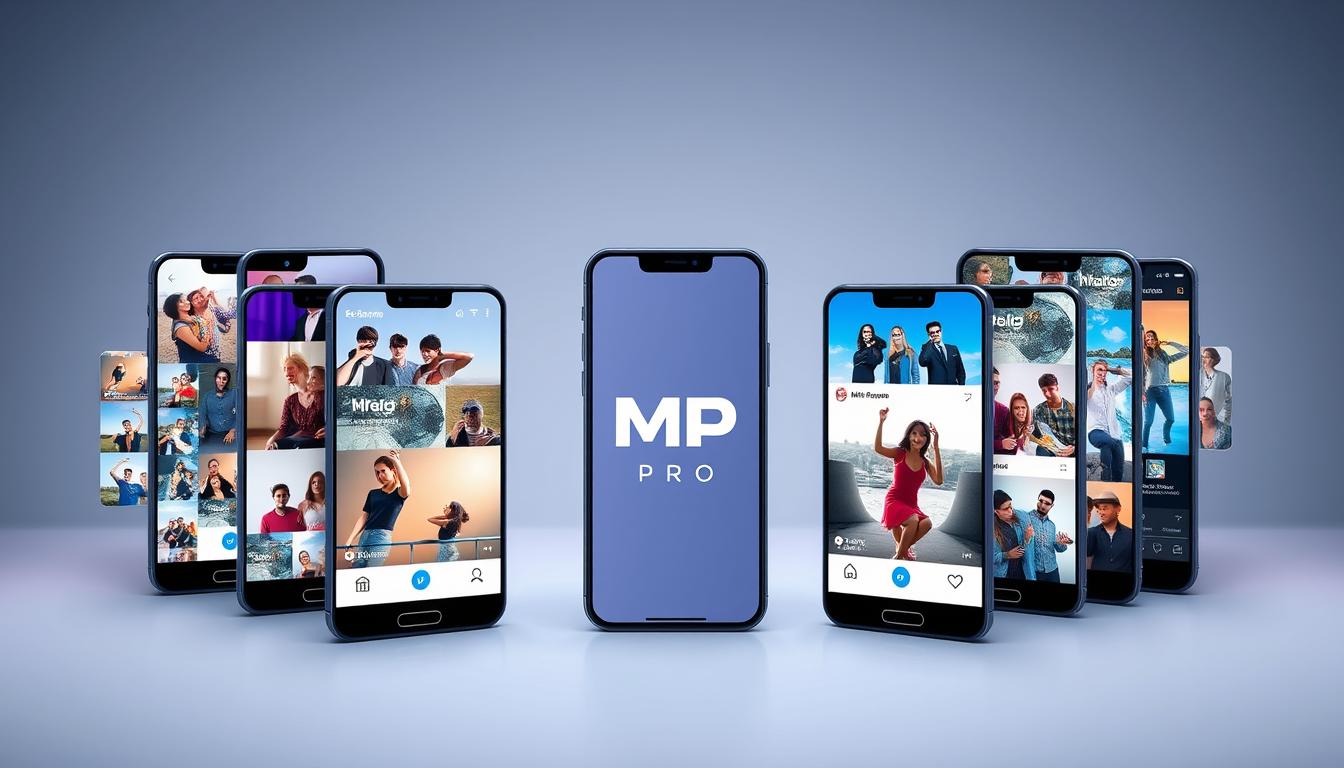
Did you know that over a million customers have shared photos of themselves wearing ASOS products on social media? This staggering number is a direct result of ASOS’s innovative #AsSeenOnMe campaign, launched in 2014. By encouraging users to post pictures with the hashtag, ASOS transformed everyday customers into brand ambassadors, creating a wave of authentic content that reshaped their marketing strategy.
In today’s digital world, user-generated content (UGC) has become a powerful tool for brands. It’s more than just photos; it’s a way to build trust and engagement. ASOS’s campaign is a prime example of how UGC can elevate a brand’s image and foster a sense of community. By showcasing real customers in their products, ASOS created a relatable and trustworthy shopping experience.
The success of the campaign lies in its simplicity. Customers were invited to share their unique styles, making the brand feel more personal and inclusive. This approach not only boosted engagement but also provided ASOS with a constant stream of fresh, authentic marketing material. As a result, the campaign became a cornerstone of their marketing strategy, proving that empowering customers can lead to remarkable results.
By leveraging social media and their website to curate this content, ASOS maximized product visibility and strengthened their brand presence. This innovative use of UGC highlights how modern e-commerce strategies can turn customer participation into a strategic advantage. The #AsSeenOnMe campaign is a testament to the impact of UGC in building loyalty and driving business growth.
ASOS’s story is just the beginning. In this article, we’ll dive deeper into the campaign’s approach, its remarkable results, and the valuable lessons it offers for your own marketing efforts.
Introduction to the Power of User-Generated Content
In today’s digital age, user-generated content (UGC) has emerged as a transformative force in marketing. It’s any content—like photos, reviews, or social media posts—created by consumers rather than brands. This authentic form of marketing is reshaping how businesses connect with their audiences.
Understanding User-Generated Content in Today’s Digital Landscape
UGC stands out because it’s created by real customers, not professional influencers or brands. This makes it more relatable and trustworthy. For instance, seeing a friend’s post about a product often carries more weight than a paid advertisement. Studies show that 79% of consumers trust UGC more than traditional advertising, making it a powerful tool for building brand credibility.
Background on Social Media and Hashtag Culture
Social media platforms like Instagram have become hubs for UGC. Hashtags like #AsSeenOnMe have made it easy for customers to share their experiences, creating a wave of authentic content. This approach not only boosts engagement but also provides brands with fresh, cost-effective marketing material.
| Content Type | Advantages | Examples |
|---|---|---|
| User-Generated Content | Authentic, cost-effective, increases trust | Customer photos, reviews, testimonials |
| Traditional Influencer Content | Wide reach, professional quality | Influencer endorsements, sponsored posts |
| Brand-Created Content | Controlled messaging, high production | Ads, official campaigns |
By leveraging UGC, brands can create a sense of community and authenticity, which are essential for building customer loyalty. To learn more about how to implement UGC in your strategy, visit our guide on content amplification. Additionally, exploring credentialing strategies can further enhance your approach to UGC.
ASOS’s “As Seen On Me” Campaign: A Deep Dive
In 2014, ASOS revolutionized its marketing strategy with the launch of the #AsSeenOnMe campaign. This innovative approach invited customers to share photos of themselves wearing ASOS products on Instagram, using the campaign’s hashtag. The result was a tidal wave of user-generated content that transformed the brand’s marketing efforts.
The Story Behind the #AsSeenOnMe Movement
The campaign’s success hinged on its simplicity and inclusivity. By encouraging customers to showcase their unique styles, ASOS created a sense of community and authenticity. The brand utilized advanced AI to curate high-quality images, ensuring that only the best content was featured. This not only boosted engagement but also provided ASOS with a constant stream of fresh, authentic marketing material.

How You Can Leverage Similar Campaigns
The #AsSeenOnMe campaign offers valuable lessons for businesses looking to enhance their marketing strategies. By empowering customers to become brand ambassadors, companies can create authentic content that resonates with their audience. Integrating user-generated content into your SEO strategy can significantly increase product visibility and drive higher sales. Additionally, leveraging social media platforms to curate and share customer content can maximize your brand’s reach and engagement.
Enhancing Consumer Trust and Social Engagement
Building trust and fostering engagement are crucial for any brand looking to connect with its audience. User-generated content (UGC) has proven to be a powerful tool in achieving both, creating a sense of authenticity that resonates deeply with consumers.
Building Social Currency Through Authentic Content
Authentic customer photos and stories act as a vote of confidence, significantly boosting consumer trust. When real customers share their experiences, it creates a ripple effect, inspiring others to engage with the brand. This phenomenon, known as social currency, is amplified when customers are featured on major platforms, increasing their social influence and the brand’s credibility.
For instance, featuring real customer photos on a brand’s website and social media channels can enhance credibility. Studies reveal that up to 76% of consumers find UGC more authentic than traditional ads, making it a potent tool for building trust. The psychological impact of social media validation cannot be overstated—it often drives purchasing decisions and fosters brand loyalty.
The Role of Real Customer Stories in Brand Loyalty
Real customer stories are the backbone of honest marketing. They create an emotional connection, making the brand more relatable and trustworthy. When customers see others like themselves endorsing a product, it strengthens brand loyalty and encourages repeat purchases.
A great example is ASOS’s campaign, where curated customer photos led to significant social engagement. This approach not only boosted trust but also provided a steady stream of authentic content. By empowering customers, brands can create a loyal community that champions their products.

| Content Type | Trust Enhancement | Engagement Impact |
|---|---|---|
| Customer Photos | Authentic visual proof | Higher likes, comments, shares |
| Real Stories | Emotional connection | Increased brand loyalty |
| User-Generated Videos | Demonstrates real use | Drives conversions |
By strategically leveraging UGC, brands can build trust and engagement, ultimately driving business growth. This approach not only benefits the brand but also empowers customers, creating a win-win situation that fosters long-term loyalty.
Strategic Advantages and Business Impact
Empowering customers to become brand ambassadors through user-generated content (UGC) has proven to be a game-changer for businesses. By leveraging UGC, companies can achieve significant cost savings while gaining authentic marketing material that resonates with their audience.
Free Marketing and Data-Driven Content Curation
One of the most significant advantages of UGC is its cost-effectiveness. Brands like ASOS have harnessed customer photos to create free marketing campaigns, reducing reliance on traditional advertising. This approach not only cuts costs but also provides a steady stream of fresh, relatable content. Advanced AI tools help curate high-quality images, ensuring that only the best content is featured.

Maximizing Social Media Reach and Consumer Insights
The impact of UGC extends beyond cost savings. It also enhances social media reach and provides valuable consumer insights. For instance, ASOS’s campaign increased customer penetration by 25% and boosted the average shopping cart value by 2%. This success highlights how UGC can drive measurable business results, making it a cornerstone of modern marketing strategies.
To integrate UGC into your e-commerce strategy, consider encouraging customers to share their experiences with your products. Showcase this content on your website and social media channels to build trust and engagement. By doing so, you can create a loyal community of brand ambassadors who champion your products.
In conclusion, UGC offers a powerful way to transform your marketing efforts. By leveraging authentic customer content, you can reduce advertising costs, gain insights into consumer behavior, and drive business growth. This approach not only benefits your brand but also empowers your customers, fostering long-term loyalty and engagement.
Conclusion
In today’s competitive market, user-generated content (UGC) stands out as a powerful tool for building trust and engagement. ASOS’s innovative approach with their campaign showcases how empowering customers can transform a brand. By sharing real photos and stories, customers become brand ambassadors, creating authentic content that resonates deeply.
This strategy not only boosts visibility but also drives measurable results. For instance, ASOS saw significant increases in social media engagement and sales. Studies show that 79% of consumers trust UGC more than traditional ads, highlighting its impact on purchasing decisions.
To enhance your marketing efforts, consider integrating UGC into your e-commerce strategy. Showcase customer content on your website and social channels to build trust and loyalty. This approach not only benefits your brand but also empowers your customers, fostering long-term success.

 ASOS’s ‘As Seen On Me’ Campaign: How User-Generated Content Transformed Their Brand
ASOS’s ‘As Seen On Me’ Campaign: How User-Generated Content Transformed Their Brand
0 Comment